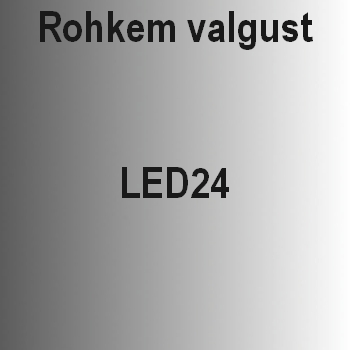What is lumen ?
Simply put, lumen is a quantity that shows the amount of light. The sign is lm. This unit is used to get an idea of how much light one or another light source can produce. This is very important when planning lighting, because otherwise you will either underlight or overlight, and neither situation is good. If you now compare the information of different light sources, you will reach efficiency, that is, the situation where you need to know how much light one or another light source produces and how much energy is needed for it. Efficiencies of different light sources:
- Filament lamp 8 ... 18lm/W, depends on power, higher power has higher efficiency
- Halogen lamp 16 ... 35 lm/W, depends on power, higher power has higher efficiency
- Fluorescent tube (energy-saving bulb) 50 ... 100 lm/W
- Gas discharge lamps 80 ... 200 lm/W
- LED 70 ... 250 lm/W
Theoretical maximum situation for white LED 300lm/W.
Based on the above, you can calculate how much power is needed to get the desired amount of light. However, it is also necessary to take into account the efficiency of the light in converting electrical energy into light. And here the situation is already much worse.
- Incandescent lamp 1.2 ... 2 %
- Halogen lamp 2.3 ... 5 %
- Fluorescent tube 8.5 ... 15 %
- Gas discharge lamps 10 ... 29 %
- LED 15 ... 33%
Theoretical maximum situation for white LED 44%
At the moment, the efficiency of an LED lamp below 100 lm/W is considered very low and they are placed in the energy class F.
Here you can find more information about the energy label of lighting fixtures that came into effect in 2021.
Therefore, when you start planning the lighting, it is definitely worth investigating how much one or the other light source is capable of, because the rest of the energy is almost all converted into heat. There is also no point in being happy about ultra-cheap LED lamps, because only LED in the product name does not guarantee that the resulting savings will actually be achieved.
From the above, you can also get an idea of why filament bulbs were banned. In a really cold climate, this also led to a situation where additional heating had to be dealt with because the heat generated by the operation of the lights heated the room.
Last modified on 05/03/2023
